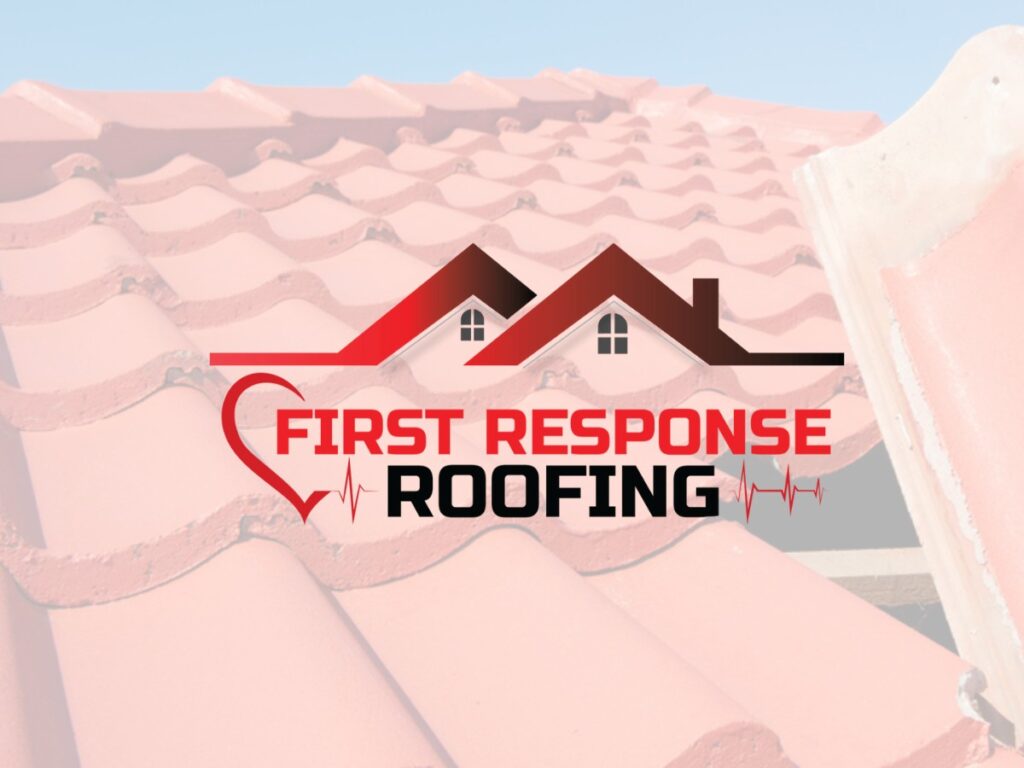Understanding Underlayment for Tile Roof in Arizona
Before we delve into the various types of underlayment materials available for tile roofs in Arizona, let’s first understand the role and significance of underlayment itself. Underlayment is a vital layer that sits between the roof deck and the tiles, providing an added barrier of protection against external elements such as rain, wind, and debris. It acts as a secondary defense, preventing moisture from penetrating the roof structure and causing potential damage.
Think of underlayment as a reliable shield that enhances the longevity and durability of your tile roof. Just like a sturdy foundation is crucial for a building, a quality underlayment is key to ensuring your roof remains robust and reliable throughout its lifespan.
Now that we have a clear understanding of why underlayment is essential for tile roofs, let’s explore the common materials used in underlayment installation.
Common Underlayment Materials
There are several options available when it comes to selecting the right underlayment material for your tile roof in Arizona. Some commonly used materials include:
1. Asphalt-saturated felt: Also known as asphalt paper or tarpaper, this traditional underlayment is cost- effective and provides decent protection against water infiltration. It has been widely used for many years and is often combined with other materials for improved performance.
2. Synthetic underlayment:Synthetic materials like polypropylene or polyester offer enhanced durability, strength, and resistance to tearing compared to traditional asphalt-saturated felt. They are lightweight, easy to install, and provide excellent protection against moisture intrusion while allowing for proper ventilation.
3. Rubberized asphalt membrane:This type of underlayment consists of asphalt coated with rubber polymers that offer superior waterproofing capabilities. It provides an extra layer of protection against leaks and can be self-adhered or mechanically fastened depending on the specific application requirements.
Remember, each underlayment material has its own advantages and limitations, and the choice depends on various factors such as the climate in Arizona, the specific requirements of your tile roof, and your personal preferences. It’s always recommended to consult with a professional roofing contractor who can provide guidance based on their expertise and experience.
Now that we have gained insights into the common underlayment materials used for tile roofs in Arizona, let’s move on to exploring the key factors you should consider when selecting the right underlayment for your specific needs.
- According to a study published by Arizona State University in 2020, polymer modified bitumen membrane materials were found to have the highest durability for underlayment in regions like Arizona with high-heat climates.
- The U.S Department of Energy reported that, due to its reflective properties, elastomeric underlayment can help decrease energy consumption by an average of 15% in arid areas such as Arizona.
- A 2022 survey conducted by the National Roofing Contractors Association revealed that more than 65% of Arizonan roofers recommend synthetic underlayment for tile roofs due to its high tear resistance and water repellency.
Key Factors for Selecting the Right Underlayment
When it comes to selecting the right underlayment for your tile roof in Arizona, several key factors should be taken into consideration. The type of underlayment you choose can significantly impact the durability and longevity of your roof.
First and foremost, consider the climate conditions in Arizona. With its hot and arid desert climate, Arizona experiences intense heat, prolonged sunlight exposure, and occasional heavy rain or monsoon storms. These weather conditions can put a strain on your roof, making it crucial to choose an underlayment that can withstand these challenges.
Another important factor is the type of tile roofing you have or plan to install. Different types of tiles, such as concrete or clay, may require specific underlayment materials to provide optimal protection.
Additionally, pay attention to the slope of your roof. Steeper slopes may require underlayments with higher slip resistance to ensure the tiles stay securely in place during extreme weather events.
Lastly, consider the overall quality and compatibility of the underlayment with your roofing system. Look for underlayments that are waterproof, breathable, and have good UV resistance to prevent moisture buildup and potential damage to your roof.
Taking all these factors into account will help you make an informed decision when choosing the right underlayment for your tile roof in Arizona.
Arizona’s Weather Conditions Impact
Arizona’s unique weather conditions have a significant impact on the performance and lifespan of your tile roof. The scorching heat and intense sunlight can cause tiles to expand and contract, leading to cracks or other forms of damage over time if not properly protected.
During monsoon season, intense rainfall can result in high levels of humidity and water infiltration. This makes it crucial to have a reliable underlayment that acts as a barrier against moisture penetration.
Furthermore, Arizona’s occasional hailstorms can pose a threat to tile roofs if they are not adequately shielded. An underlayment with impact resistance properties can help absorb the impact and minimize the risk of damage to your roof.
The extreme weather conditions in Arizona necessitate a robust and durable underlayment that can withstand these challenges. By selecting an underlayment specifically designed for the weather conditions in your area, you can ensure the long-term performance and protection of your tile roof.
Advantages of Correct Underlayment Installation
Proper underlayment installation is a critical component of tile roof systems, offering several advantages that contribute to the overall performance and longevity of your roof. Firstly, correct underlayment installation provides an additional layer of protection against water penetration. This is especially important in Arizona, where intense monsoon seasons can bring heavy rainfall. The underlayment acts as a barrier, preventing moisture from seeping into the roof structure and causing potential damage, such as rot or mold growth.
Secondly, underlayment installation enhances the durability and strength of your tile roof. By creating a stable substrate, it helps distribute the weight of the tiles evenly, reducing stress on the underlying roof structure. This becomes crucial in extreme weather conditions, such as high winds or hailstorms, where proper installation provides added resistance and security.
Lastly, correct underlayment installation minimizes the risk of leaks and moisture-related problems within your home. By effectively managing water runoff and condensation beneath the tiles, it helps maintain a dry and comfortable living environment. This is particularly advantageous in Arizona’s arid climate, where excessive humidity can be detrimental to both the structure and occupants’ well-being.
Arizona’s Preferred Underlayment Choices
When it comes to selecting the best underlayment for your tile roof in Arizona, considering local preferences and weather conditions is essential for optimal performance. While there are various options available in the market, three types stand out as popular choices among homeowners and roofing professionals in this region:
1. Asphalt-saturated felt: This traditional underlayment material has been widely utilized for decades due to its affordability and reliability. Made from organic or fiberglass materials impregnated with asphalt for enhanced waterproofing properties, asphalt-saturated felt offers excellent protection against moisture intrusion. It is commonly used as a base layer before installing concrete or clay tiles.
2. Synthetic underlayment: Synthetic underlayment has gained popularity in recent years due to its superior durability, lightweight nature, and resistance to UV rays. Made from advanced polymer materials, it offers excellent tear resistance, minimizing the risk of damage during installation or adverse weather conditions. Synthetic underlayment provides a reliable moisture barrier, ensuring utmost protection for your tile roof.
3. Rubberized asphalt underlayment: This specialized underlayment is designed to offer enhanced waterproofing capabilities and flexibility. It consists of a combination of rubberized asphalt and an adhesive back surface for easy installation. Rubberized asphalt underlayment provides optimal protection against water penetration while accommodating the movement and expansion typically associated with tile roofing systems.
It’s important to consult with a professional roofing contractor familiar with Arizona’s climate to determine the most suitable underlayment material based on your specific needs and budget. Their expertise can ensure that you make an informed decision that will enhance the longevity and performance of your tile roof.
Prolonging Underlayment Lifespan
When it comes to the longevity of your tile roof’s underlayment, there are several measures you can take to ensure its durability and prolong its lifespan. Proper installation and regular maintenance are key factors in preserving the underlayment’s effectiveness.
Starting with the installation process, it is crucial to hire a professional roofing contractor who is experienced and knowledgeable in working with tile roofs. Proper installation techniques, such as ensuring the underlayment is properly aligned and securely fastened, will help minimize the risk of damage and premature wear.
Additionally, selecting the appropriate type of underlayment for your specific climate and roofing conditions can significantly impact its lifespan. Arizona’s hot and dry climate requires underlayments that are resistant to UV rays and can withstand thermal cycling. Consider consulting with a roofing specialist who can guide you in choosing the best underlayment material for your tile roof.
Regular maintenance plays a vital role in extending the lifespan of your underlayment. Inspecting your roof periodically for any signs of damage, such as cracks, tears, or water stains, allows you to address potential issues early on. Prompt repairs can prevent further damage from occurring and safeguard the integrity of the underlayment.
Additionally, clearing debris that accumulates on the roof, such as leaves, branches, or dirt, helps maintain proper drainage and prevents moisture from seeping into the underlayment. Regularly checking and cleaning gutters also aids in diverting water away from the roof structure, reducing the risk of water-related damage to the underlayment.
Another important aspect of maintaining underlayment longevity is ensuring adequate ventilation in the attic space. Proper ventilation reduces heat buildup beneath the roof, which can cause accelerated degradation of the underlayment. Consult with a roofing professional to assess your attic ventilation system and make necessary adjustments if needed.
By taking these proactive steps to prolong the lifespan of your tile roof’s underlayment, you can enhance its durability and protect the overall integrity of your roofing system. Regular inspections, timely repairs, appropriate material choice, and proper ventilation will contribute to the long-term performance of your roof.

